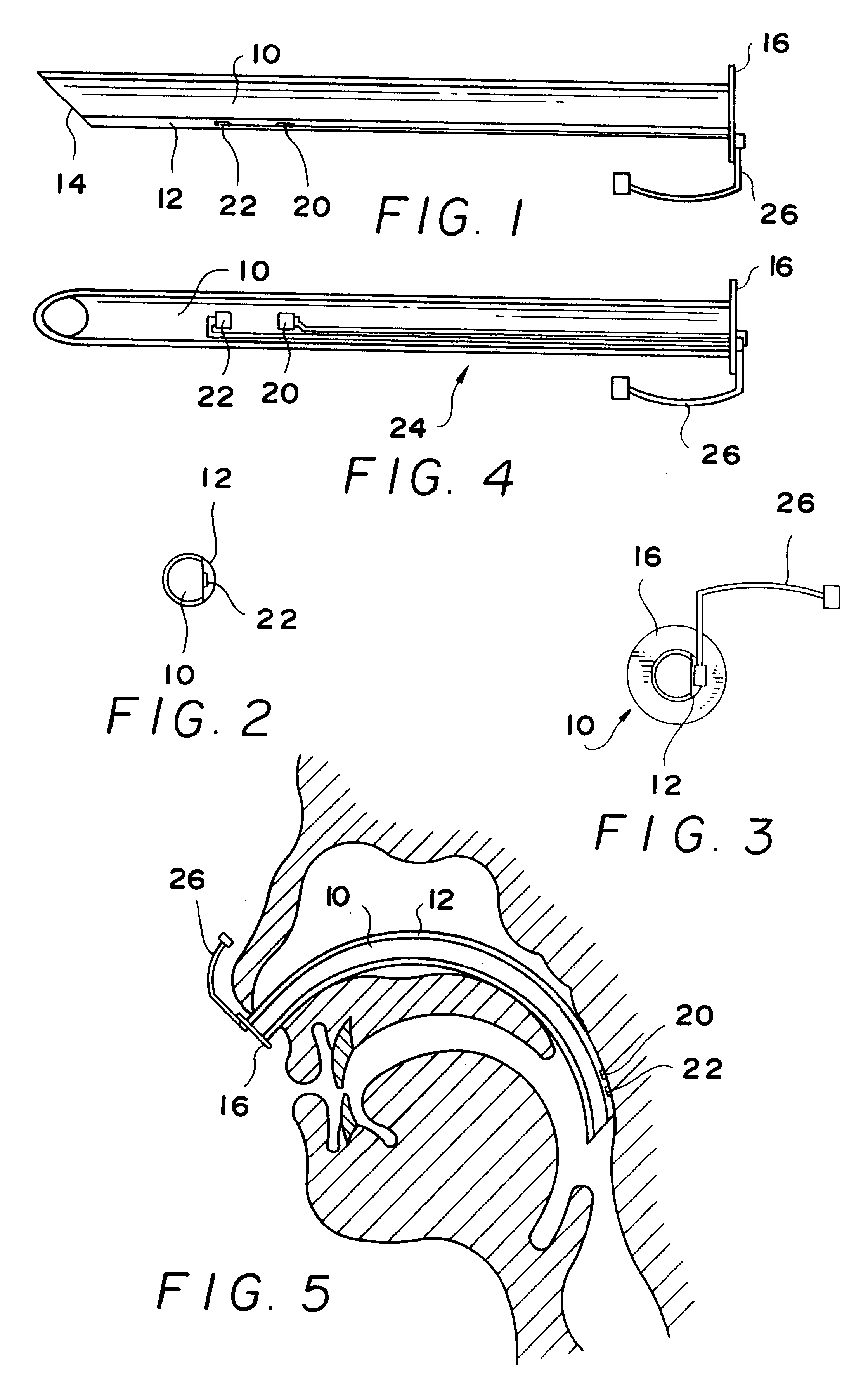Nasopharyngeal airway with reflectance pulse oximeter sensor
a technology of pulse oximeter and nasal airway, which is applied in the field of reflex oximetry, can solve the problems of less efficient peripheral pulse oximeter, less effective placement of conventional pulse oximeter in patients with severe burns, and less patient comfort, so as to improve the quality of care and improve the effect of pulse oximeter readings
- Summary
- Abstract
- Description
- Claims
- Application Information
AI Technical Summary
Benefits of technology
Problems solved by technology
Method used
Image
Examples
Embodiment Construction
FIGS. 1-5 illustrate a preferred embodiment of the pulse oximeter sensor assembly according to the invention. The pulse oximeter sensor assembly includes a nasopharyngeal airway 10 in combination with pulse oximeter elements 20, 22, 24, and 26. The pulse oximeter sensor elements 20, 22, and 24 are preferably disposed within the wall of the nasopharyngeal airway. Preferably, the wall of the nasopharyngeal airway is made of a clear polymer. Furthermore, it is preferable that the wall may include a thickened section 12 around approximately one-third of the circumferential area to house the pulse oximeter sensor elements 20, 22, and 24. Alternatively, the thickened section 112 may be around just the elements themselves and not run the length of the wall.
As depicted in FIG. 1, the nasopharyngeal airway 10 is preferably a hollow, elongated member defining a passageway, e.g., a cylindrical tubular member, having an insertion end 14 and a base end 16. The insertion end 14 is preferably angl...
PUM
 Login to View More
Login to View More Abstract
Description
Claims
Application Information
 Login to View More
Login to View More - R&D
- Intellectual Property
- Life Sciences
- Materials
- Tech Scout
- Unparalleled Data Quality
- Higher Quality Content
- 60% Fewer Hallucinations
Browse by: Latest US Patents, China's latest patents, Technical Efficacy Thesaurus, Application Domain, Technology Topic, Popular Technical Reports.
© 2025 PatSnap. All rights reserved.Legal|Privacy policy|Modern Slavery Act Transparency Statement|Sitemap|About US| Contact US: help@patsnap.com


